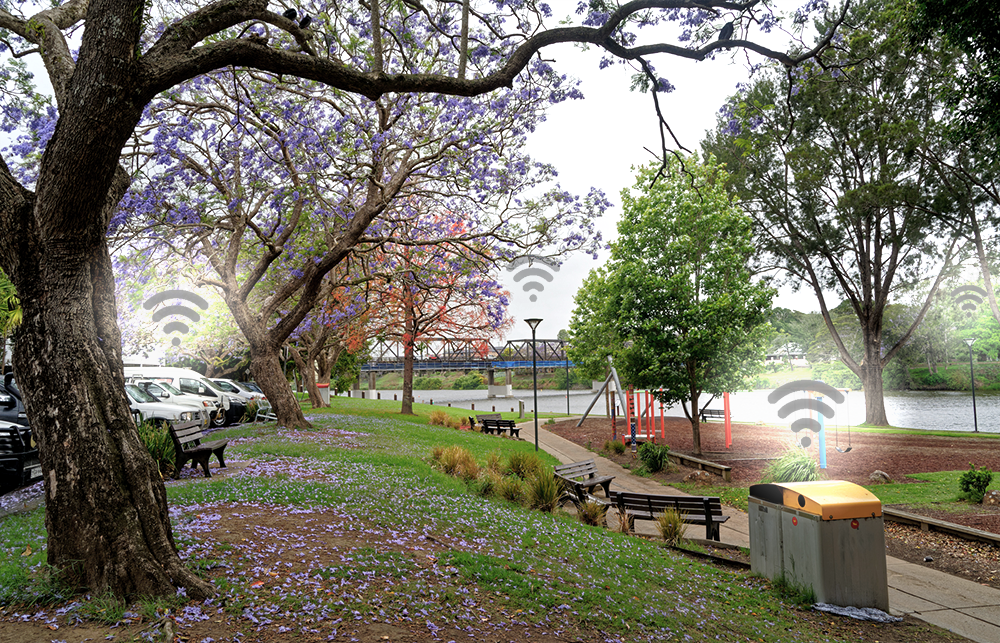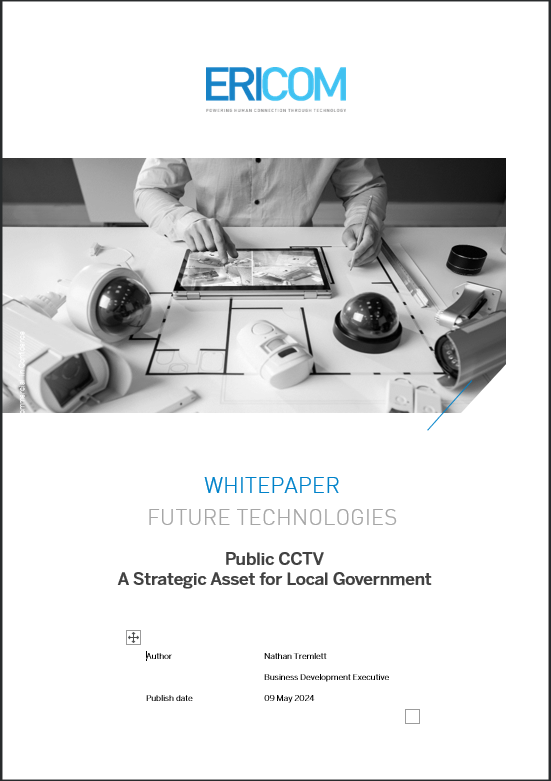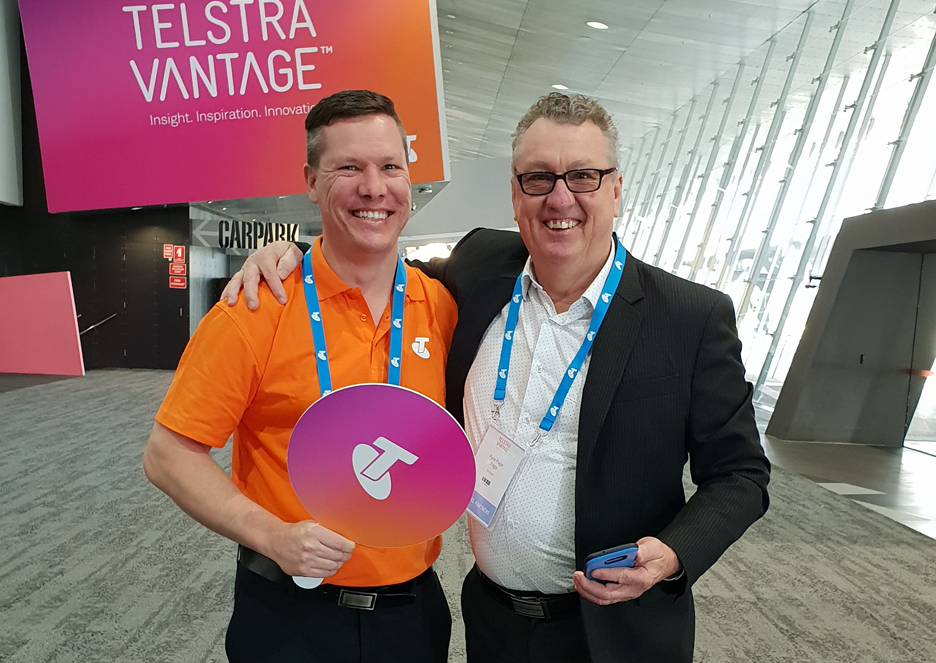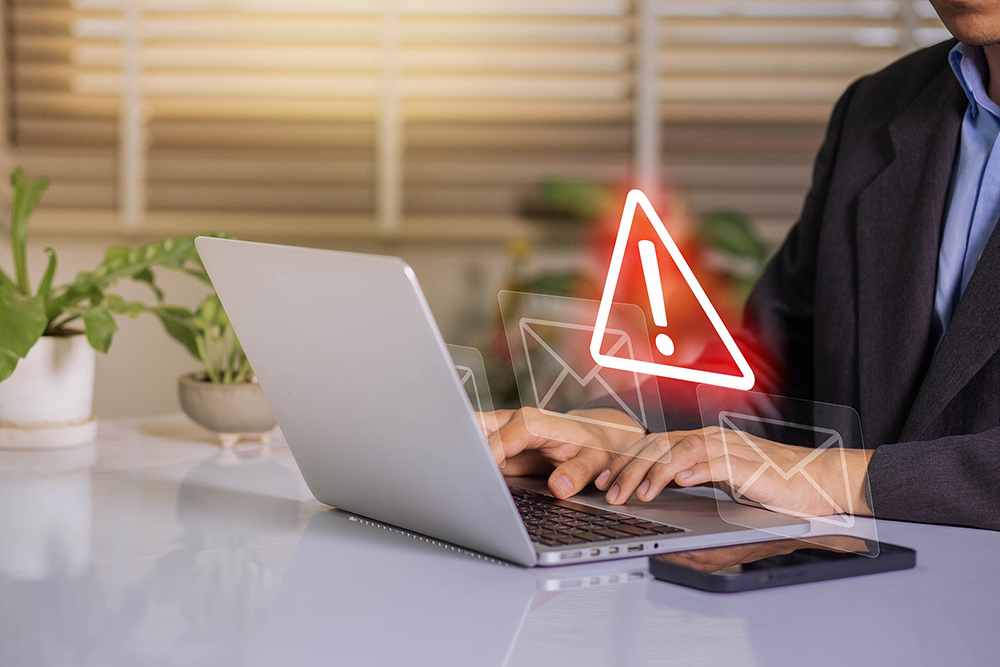There’s been a lot happening at Ericom in recent years, from transitioning through a company merger to carving out new niches in exciting fields for innovation. Here you’ll find everything you need to know about latest developments at Ericom, project highlights, and industry insights from our team.
Learn the ABCs of smart communities
How IoT and AI are upgrading our neighbourhoods
Smarter communities are not only becoming popular, but more dependable as the population of Australia increases. They prove to be an excellent investment for councils by leveraging technology to improve transportation, medical services, utilities, and environment to enhance the quality of life for their citizens. In recent years, Artificial Intelligence (AI) and the Internet of Things (IoT) have been combined to collate accurate information for future decision-making, giving councils a competitive advantage.
The role of IoT in a smarter community
IoT is the invisible thread weaving a network that makes use of telecommunications and wireless infrastructure to connect devices embedded in buildings, bridges, roads, and public spaces. We call these devices machine-to-machine or gateways, and they collect and transmit information such as temperature, humidity, traffic flow, energy consumption, and air quality. However, what were once pockets of information have now grown into a sheer volume of data that can be overwhelming and, at times, impossible for humans to analyse. This is where AI comes into play.
The intersection of IoT and AI
AI simplifies information by using machine learning to analyse the data collected by IoT devices, identifying patterns that are then shared through platforms that target specific needs. There are four primary types of platforms:
Device management platforms connect, manage, and maintain IoT devices to ensure everything is up and running and, most importantly, updated. They can easily organise diagnostics and troubleshooting when needed.
Connectivity and network platforms allow communication between devices, so they can transmit data sharing, mapping, and network management between themselves.
Data and analytics platforms process, store, and then analyse the data generated by IoT devices.
Application Enablement Platforms (AEP) provide the tools required for businesses to build, deploy, and manage IoT applications.
Getting started with the IoT and AI combo
Embarking on the journey to implement IoT and AI solutions for smarter communities doesn’t require a PhD. It’s all about finding the right fit for your community’s needs. The ideal solution should be compatible, scalable, flexible, secure, and compliant, all while meeting your desired deployment speed. At Ericom, we’ve honed our expertise to ensure success, guiding you through a streamlined process to build your community’s existing – or dream ecosystem. Here’s how we can get you started:
- Define objectives and scope: Clearly outline what you aim to achieve and the extent of your project.
- Assess current infrastructure: Take stock of your existing systems and technologies, which will help to understand how new solutions can be introduced.
- Identify key stakeholders and risks: Pinpoint who will be involved and potential challenges that may arise.
- Develop a detailed project plan: Lay out a comprehensive roadmap with timelines and milestones.
- Pilot and refine: Start small to test the waters, then iterate and improve based on feedback.
- Rollout and monitor: Implement your solution across your community while keeping a close eye on performance.
- Evaluate and optimise: Continuously assess results and adjust to optimise efficiency and effectiveness.
- Add new use cases: As you grow accustomed to your IoT and AI integration, explore additional ways to leverage these technologies for further benefits to your community.
With Ericom’s expert guidance, navigating the roadmap to modernise your community with IoT and AI becomes seamless. Contact Ericom’s Future Technology team at engage@ericom.com.au today to kickstart your journey toward successfully transitioning your community into a smarter future.
7 June, 2024
Share this:
Leveraging video data for local government
A strategic approach to public safety, privacy, and innovation
Public Closed-Circuit Television (CCTV) systems are crucial in enhancing public safety, deterring crime, monitoring traffic, and supporting emergency response. However, local governments across Australia are grappling with the challenge of replacing aging CCTV infrastructure initially funded by grants that are no longer available.
Additionally, they must navigate compliance with privacy regulations, including the Privacy Act 1988 and the Australian Privacy Principles, which govern the collection, use, and disclosure of personal information, including CCTV data. Despite these challenges, CCTV systems remain pivotal in enhancing local government communities.
Why public CCTV matters
According to a 2019 Australian Local Government Association (ALGA) survey, 82% of local governments reported having CCTV systems. There are a variety of purposes that have driven the broad adoption of public CCTV, with a majority of councils reporting them to be effective in the following key areas:
Enhancing public safety and security: CCTV hits two nails on the head, deterring and detecting criminal activity. By keeping a watchful eye on dark alleys, busy intersections, and previous hotspots, antisocial behaviour can be brought to light—that is, unless the offender chooses to leave, knowing their actions are being recorded.
Traffic management and enforcement: By monitoring congestion and accidents, previously gridlocked streets are efficiently cleared. CCTV can identify common bottlenecks and parking violations to keep people moving and contribute to better traffic management.
Emergency response and disaster management: When disaster strikes, CCTV provides emergency services with real-time situational awareness and evidence, enabling them to better understand the scene and formulate effective response plans.
Event management and crowd control: Events transpire at their best, with CCTV actively monitoring crowd attendance, behaviour, and movements. Patterns found can also support planning future events.
Economic development and tourism: CCTV captures the flow of commerce, gauging where improvements can be made while attracting visitors and investors who wish to benefit from a community’s safety and security.
Urban planning and design: The complex network of footpaths and roads can be understood entirely as CCTV analyses pedestrian and vehicle flows, land use, and environmental conditions, to support informed decision-making.
Challenges and Barriers
Despite the number of benefits of CCTV making it a necessary investment, local governments face five key challenges in its implementation and upkeep:
- Funding constraints, including the resources required to maintain, upgrade, and expand the CCTV system.
- Technical expertise in managing and operating complex CCTV networks is a specialised skill.
- Integration and interoperability challenges due to different systems often lacking seamless integration.
- Data analysis remains difficult when extracting actionable insights from video.
- Governance and ethics require clear policies and guidelines for responsible CCTV use.
Reimagining public CCTV
Ericom are the experts in CCTV advantages and hurdles. We understand the best way to unlock your community’s full potential and can provide tailored guidance. From our wealth of experience, we’ve found that considering the following solutions is an excellent starting point.
Shift from capital to operational expenditure to cover the lack of state and federal funding. Transitioning from a significant upfront investment in CCTV assets to regular and predictable payments can ease financial burdens.
Cloud-based and scalable platforms provide flexible resources that can be easily adjusted as a community’s needs evolve. By moving away from traditional on-premises infrastructure, cloud platforms eliminate the need for costly hardware and the associated maintenance expenses.
Artificial Intelligence (AI) and analytics can detect patterns and trends in real-time, unlocking valuable insights hidden within raw video data. The enhanced predictive capability also enables councils to anticipate potential problems and aid decision-making.
Collaborating with stakeholders such as other local governments and police and emergency services, can open channels for integration that were previously unavailable due to incompatible technology between CCTV resources and data.
Developing comprehensive policies encompassing governance, privacy, and ethics is crucial in establishing a robust framework for the responsible deployment and operation of surveillance systems.
For a comprehensive report that covers the impacts of CCTV and practical guidance for ensuring it is a valuable resource that generates a positive impact for your community: FT Whitepaper – Public CCTV: A Strategic Asset for Local Government (Jan 2024).
Public CCTV is more than just surveillance; it’s a strategic asset that can shape safer communities, drive economic development, and inform urban planning. By adopting innovative approaches, local governments can overcome challenges and ensure the responsible use of CCTV technology.
27 May, 2024
Share this:
Letter from the CEO
Error found, and it’s human!
At the end of 2023, we gathered in our company meeting to discuss a matter that continues to weigh heavily on my mind – cybersecurity. Whether following Australian regulations or using online technology to connect with our customers and suppliers, we cannot be a part of the Australian ecosystem without digital tools, and as we navigate the digital landscape, I am compelled to underline the significance of this issue.
I want to stress an uncomfortable truth – our company’s biggest weakness is every single one of us.
Yes, you read it right. It’s not advanced hacking techniques or sophisticated malware programs that pose the most significant threat to our organisation. Not even the relentless hackers tirelessly attempting to infiltrate our systems. It’s us, the people who touch so much of the technology that runs this business.
I know it’s a cliché to say that I’ve seen the fax machine and countless other innovations come and go. But if there’s one thing I’ve learnt, it’s how breathtakingly faster we move onto the next big thing compared to back then. This speed is just the norm as we increase connectivity and reliance on digital tools. But another norm is our constant engagement with technology, whether sending an email or clicking a link. This can be the very action that pulls down the robust system we’ve built.
One such danger is social engineering – hackers use it to manipulate individuals into revealing confidential information. It’s a psychological game where hackers prey on our trust and exploit human vulnerabilities. They use fatigue to get to people, popping up the same message 20 or 30 times until it seems normal and we let our guards down. That’s when they strike, using fraudulent emails or messages that appear legitimate and tricking recipients into divulging sensitive information – also known as phishing attacks.
To help us combat this endeavour, we offer penetration testing and white-hacking services. These tests simulate real-world hacking attempts, enabling us to gauge our preparedness and resilience and improve our defences.
As we march into 2024, let’s remember that cybersecurity is not merely an IT issue – it’s a business survival issue. It’s about safeguarding our livelihood. Take the lessons learnt by family and friends as they continue to be tricked by not just hackers but also the most brilliant impersonation actors.
Please take cybersecurity seriously, stay informed, and remain vigilant. Let’s ensure that we’re not the weak link in our chain. Let’s protect our company, our customers, ourselves, and our families.
Stay safe,
Kyle Page
CEO, Horizon365
19 January, 2024
Share this:
Kyle Page’s journey to Telstra Hall of Fame
Shining a spotlight on the guide of the Ericom team
In the quiet town of Yeppoon, Queensland, an ambitious country kid named Kyle Page began his journey. Fast forward to today, and he stands as the proud recipient of the Telstra Hall of Fame award, a testament to his unwavering dedication and visionary leadership. Kyle’s story starts in the 1980s, cutting his teeth in the technology industry selling typewriters, fax machines, and dial-up internet. Little did he know that these early experiences would shape the foundation of a career marked by innovation.
M2K Acquisition
In a recent milestone, Kyle turned Ericom into a multi-state business by spearheading the acquisition of Victoria’s M2K. This strategic move aimed to address gaps within Telstra and the broader industry. This allowed Kyle to empower his dedicated team, entrusting them with the reigns to manage Ericom while giving him the opportunity to explore new formulas in a fresh territory.
Winning the Offender Technology Tender
Kyle’s leadership played a crucial role in Ericom’s victory in the Offender Technology tender for NSW. Breaking a 20-year dominance by NEC and Optus, Ericom demonstrated their deep knowledge of PABX and UC solutions for the NSW Department of Justice, allowing the team to deliver innovative solutions under the new tender. Today, NSW stands as a world leader in inmate-in-cell technology, delivering better outcomes for communities.
“Invisible Excellence” – A Mantra for Success
Kyle executed the Ericom board’s strategy by prioritising Telstra and recurring contracts, driving revenue, profitability, employee retention, and customer experience. At the core of their success is the mantra of “Invisible Excellence,” a guiding principle shaping behaviour at all levels of the company. As Kyle aptly puts it, “Happy staff deliver happy customers who look to buy more from a trusted partner.”
A CEO Proud of His People
Today, Kyle takes pride not just in the projects Ericom undertakes but in the independent initiatives of his dedicated team. Family values have been the bedrock of Ericom from the start and that remains intact, fostering a sense of belonging among both seasoned and new team members. “I am proud we have maintained our family values approach to life and business as we have grown. Ericom is a family values-based business, true to its word,” reflects Kyle. His pride extends to the long-standing relationships with key figures like Tony Economos, Murat Aydemir, Shane O’Hearn, and Matt Redpath, relationships that have endured for over 25 years.
As Kyle Page stands in the Hall of Fame, his journey from a tech-savvy country kid to the CEO of a $50 million company is not just a personal triumph but a narrative of Ericom’s innovation, and commitment to excellence. The story continues, and with Kyle at the helm, the future is bound to be as bright as his Queensland spirit.”
15 December, 2023
Share this:
Legal action and the quest for cybersecurity culture
Finding a middle ground: Legal action and the quest for cybersecurity culture.
In the ever-evolving world of cybersecurity, the need for strong protection against cyberattacks is clear. Recent developments show that corporate regulator ASIC is taking a tougher stance on holding board directors and executives responsible for their organisations’ shortcomings in this area.
While this approach might seem promising to boost cybersecurity culture, the situation is far from straightforward. In this article, we’ll dive into the implications of this approach and why achieving the right cybersecurity culture demands a more nuanced perspective.
The changing regulatory landscape
In response to the increasing threat of cyberattacks, regulators are taking a more proactive approach. They aim to set a precedent by pursuing legal action against companies that have suffered security breaches due to their failure to take adequate precautions to protect their customers and infrastructure from hackers. At first glance, this seems like a strong deterrent, sending a clear message that neglecting cybersecurity won’t be tolerated.
However, it is far more complex than a simple risk-and-reward equation. While some attackers are driven by financial gain, others have different motivations, often related to geopolitics. Nation-state actors, for instance, might infiltrate organisations not for monetary gain but for strategic advantage or intelligence gathering. This distinction highlights the multifaceted nature of cyber threats, making it challenging to attribute blame solely to victimised organisations.
The challenge of defining “Recklessness”
Another obstacle is determining what qualifies as “recklessness” in cybersecurity. It is constantly evolving, and the threat landscape is constantly shifting. What might have been considered adequate protection one year could fall short the next? Therefore, labelling an organisation as “reckless” often relies on subjective judgments and the benefit of hindsight. This approach could inadvertently encourage a culture of fear and concealment within organisations, undermining the transparency necessary to protect potential victims.
Instead of concentrating solely on punitive measures, a more balanced approach might involve promoting transparency within organisations. Encouraging companies to openly share information about their cybersecurity practices, vulnerabilities, and breach response plans could foster a collaborative environment for addressing cybersecurity threats. This approach can help organisations learn from one another’s experiences and collectively enhance their defences.
Regulation’s role
Regulation undoubtedly plays a crucial role in cybersecurity, establishing a minimum standard for what is expected of organisations in safeguarding their customers and data. However, achieving the right equilibrium between regulation and cultivating a culture beyond compliance is essential. These regulations should provide a security framework and be adaptable to the ever-changing threat landscape, encouraging proactive measures rather than solely penalising shortcomings.
The intention behind legal action against companies that fall victim to cyberattacks due to inadequate protection is to cultivate a sense of responsibility and preparedness. Nevertheless, the cybersecurity landscape is far from uncomplicated, with numerous motivations behind attacks and a constantly shifting threat environment. While regulations are vital, they shouldn’t discourage organisational transparency and cooperation.
In pursuing a robust cybersecurity culture, striking a balance is imperative. Encouraging open dialogue, sharing best practices, and staying flexible in the face of emerging threats are all essential components of a comprehensive strategy.
Staying proactive and informed is crucial
Ericom is leading the charge by assisting many Australian businesses in compliance with the Australian Cyber Security Centre (ACSC) Essential Eight Maturity Model. By incorporating our managed security services model, we guide these enterprises through each critical step of this indispensable compliance journey and offer ongoing support vital for maintaining a robust cybersecurity posture.
This continuous assistance benefits businesses by providing immediate response to security incidents, ongoing monitoring for threats, and expert advisory on the evolving cybersecurity landscape, ultimately safeguarding your business, board of directors, and executives in a dynamically changing threat environment. Taking proactive measures with Ericom’s support ensures your business is resilient, secure, and aligned with industry-leading best practices, fortifying your defence mechanisms against sophisticated cyber threats.
This is a shared responsibility, and by taking proactive steps, we can collectively create a safer digital environment for all. Don’t wait until it’s too late – act now to protect your business and data.
30 November, 2023
Share this:
Dialling Back and Leaping Forward
Remembering three-decades of mobility, from the nostalgic charm of pagers, to embracing the freedom of 5G.
by Dino Haritos
I’m taking a trip down memory lane to share some thoughts on how far we’ve come in the world of mobile technology. While I’m usually looking forward to the future, today feels like the right day to take a step back and appreciate the road so far.
I still remember the days when I was rocking a pager and jumping on my bike in a race against time to search high and low for those elusive red telephone booths. But those phone booths were far from private sanctuaries. We had to share them with the public, including vandals and eavesdroppers. You’d stand there, 50 cents in hand, wondering who else had shared this space with you.
Fast-forward to the analogue mobile phone era, where models like the 007 and 018 came onto the scene and changed everything. We were freed from the phone booth and had the power to connect wherever and whenever we pleased. It was the first time I considered a phone as an extension of myself.
Then came the digital mobility revolution, introducing us to 1G, 2G, and eventually 3G networks with better voice quality and range. Not to mention the birth of SMS! Once I got my first mobile car phone – the Uniden CP1000 – I was happy to wave goodbye to my pager in the rearview mirror.
And now 5G is supporting the flexibility of remote working, with video calling through Microsoft Teams available from the smart computers in our pockets. But as our phone upgrades give us more freedom every year, the more we’re connecting to public Wi-Fi networks when our mobiles aren’t performing at their best. It’s as if we’re stepping back in time and into the old phone booths – shared, and uncertain.
As connecting to public Wi-Fi can be risky business, cybersecurity is more crucial than ever. Freeing ourselves from the traditional office space goes hand-in-hand with a demand for enhanced protection. That’s where mobile threat defence and unified end-point management come into play. Think of them as an extra pair of hands that help safeguard against threats and emerging dangers.
Cheers to the past, the present, and the exciting future ahead. I can’t wait to see how technology will keep unleashing us, but let’s work together to keep the journey secure. Reach out to us at 1300 360 369 number to learn more about mobile threat defence.
13 November, 2023
Share this:
More articles and insights
The benefits of video conferencing for Teams
Are you looking for a way to improve communication and collaboration within your team? At Ericom, we offer the best video conferencing technology on the market, providing a dynamic and engaging experience that breaks down barriers between people. Our tools allow you to connect with anyone, anywhere, and focus on what matters most. With clear …
Continue reading “The benefits of video conferencing for Teams”
20 March, 2023
Making your digital transformation plan a reality
Integrating digital technology can be a complex task, but with the right plan, it’s achievable. Digital transformation is all about transforming your business to become more efficient, effective, and customer-focused by adopting digital technology. It’s a value-driven process that emphasises the importance of delivering value to customers, which can result in streamlined operations, reduced costs, …
Continue reading “Making your digital transformation plan a reality”
27 February, 2023
Top Ten uses for Unified Communications
Streamline your communications with an all-in-one platform: voice, video, and messaging combined. In today’s business world, effective communication and collaboration are essential for success. Luckily, unified communications (UC) offers an innovative solution to centrally manage communication channels, such as email, video conferencing, and chat. Say goodbye to wasted time coordinating meetings or tracking down colleagues! …
Continue reading “Top Ten uses for Unified Communications”
14 February, 2023
Why choose Fortinet for your Network Security as a Service solution
Unlock the power of your people with tech that brings meetings to life.
8 November, 2022


















Social engineering: A hidden threat
Would the sleek social engineering skills of the cyber-criminal penetrate your business networks? Cybercrime in Australia is a growing threat with very real consequences, in 2021 Australian businesses lost over 33 billion dollars as a result of being compromised by cybercriminals. To put this into more startling terms, a new cybercrime is reported to the …
Continue reading “Social engineering: A hidden threat”
5 October, 2022